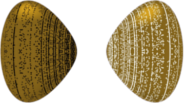

|
||||||||

|
||||||||

|
||||||||

|
||||||||

|
||||||||

|
||||||||

|
||||||||

|
||||||||

|
||||||||

|
||||||||

|
||||||||
Poincaré instituteReinventing rational points |
|
||||||||
Seminar
Kodaira dimension of some moduli spaces of special hyperkahler fourfoldsJack PetokLet \(\mathcal M_n\), with \(n\gt 0\) even, denote the moduli of polarized degree n smooth complex hyperkahler fourfolds of K3\({}^{[2]}\) type. For example, when \(n=2\), a general point corresponds to a smooth EPW double sextic; when \(n=6\), a general point represents the Fano variety of lines of a cubic fourfold. In each of these moduli spaces, one can study the Noether-Lefscehtz divisors, also known as special divisors. The geometry of these divisors for \(n=6\) was initiated by Hassett. The Kodaira dimensions for all but finitely many special divisors in \(\mathcal M_6\) were computed by Tanimoto and Várilly-Alvarado. We study the special locus in \(\mathcal M_2\). We review how the special locus may is a countable union of divisors \(D_d\) corresponding to fourfolds X polarized by a rank 2 lattice whose orthogonal complement in \(H^2(X,\mathbf Z)\) has discriminant \(d\). The divisor \(D_d\) is nonempty if and only if the discriminant \(d\) is \(0,2\) or \(4\) mod \(8\) (and \(d\) is not \(2\) or \(8\)). Using the “low weight cusp form trick” of Gritsenko, Hulek, and Sankaran, we compute the Kodaira dimensions of the (components of the) divisors \(D_d\) for all but finitely many discriminants d. We also discuss important connections to the Brauer groups of very general K3 surfaces. |
|||||||||



